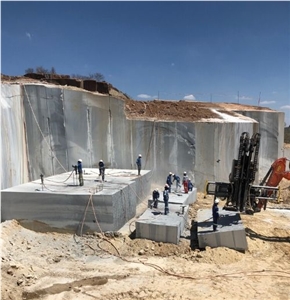Unearthing the Rich Background and Lasting Practices of Granite Quarrying
As we depend on the precipice of discovering the complex tapestry of granite quarrying, a trip through time discloses not simply the physical act of removing rock however additionally the cultural and historic value woven right into the really textile of this technique. From the ancient beginnings that laid the structure for contemporary quarrying strategies to the lasting methods that are shaping the future of this market, each carve mark on granite surfaces tells a tale waiting to be unearthed (granite quarries in south africa). The heritage of granite quarrying extends far past simple removal; it is a testimony to human resourcefulness, resilience, and the enduring appeal of this magnificent stone
Old Origins of Granite Quarrying
Dating back to ancient human beings, the technique of quarrying granite has actually been an essential component of human background and architectural advancement. The earliest proof of granite quarrying dates back to old Egypt, where large pyramids and intricate sculptures were crafted from this resilient stone. The Egyptians used primitive tools to remove granite blocks from quarries, showcasing the importance of this material in their significant buildings.
Moving onward in background, the Greeks also made substantial contributions to the quarrying of granite. The Greeks made use of granite in numerous building marvels, such as holy places and statues, demonstrating their ability in shaping and sculpting this sturdy rock. The Romans additionally refined the strategies of quarrying granite, employing innovative devices like blades and hammers to remove and form granite for their renowned frameworks.
Via the centuries, the technique of quarrying granite has progressed, with contemporary innovations boosting efficiency while keeping the classic charm of this natural rock - granite quarries in south africa. From ancient people to modern contractors, the heritage of granite quarrying remains to form our globe
Development of Quarrying Techniques
The evolution of quarrying methods has been marked by a continual development towards greater performance and accuracy in drawing out granite. From the basic approaches utilized by our ancestors to the innovative modern technologies utilized in modern-day quarrying operations, the industry has undergone significant improvements. Early quarrying strategies entailed hand-operated labor with basic devices such as knives, hammers, and wedges to draw out granite blocks from the planet. As civilizations proceeded, techniques like fire-setting and primitive nitroglycerins were introduced to promote the removal process.
In even more recent times, the development of equipment revolutionized the quarrying industry, allowing quicker removal rates and enhanced performance. Technologies such as ruby wire saws, high-pressure water jets, and pneumatically-driven drills have ended up being common in modern-day quarries, enabling precise cutting and minimized waste. Improvements in computer-controlled devices and 3D modeling have enhanced quarrying procedures, leading to very little environmental effect and boosted sustainability methods. As the need for granite remains to rise, the evolution of quarrying methods continues to be essential to meeting market requires efficiently and sustainably.
Cultural Importance of Granite
Granite holds an extensive social importance throughout numerous civilizations due to its long-lasting presence in building masterpieces and revered monuments. The cultural relevance of granite expands past its physical features; it personifies strength, security, and eternity, making it a sign of sustaining heritages and practices.

Sustainable Practices in Quarrying
Among the rich history of granite quarrying and its cultural value lies a growing focus on lasting methods within the market. As ecological recognition and concerns concerning source depletion have actually increased around the world, the quarrying sector has actually progressively accepted lasting techniques to lessen its impact on the atmosphere and bordering neighborhoods.

Moreover, improvement and recovery of quarry sites post-extraction are indispensable to lasting practices. By recovering quarried locations to a natural or helpful state, such as developing wild animals habitats or leisure rooms, quarriers can balance out the ecological impact of their procedures and add positively to the local ecological community.
Tradition of Granite Quarrying
With a historic backdrop soaked in craftsmanship and commercial progress, what sustaining impact has granite quarrying left on the landscape of modern culture? The legacy of granite quarrying goes beyond simple extraction techniques; it has actually formed building wonders, city landscapes, and cultural heritage worldwide. The resilient nature of granite has actually made it a preferred selection for monuments, buildings, and facilities, standing as a testament to the ability and creativity of quarry employees across generations.
Furthermore, the financial footprint of granite quarrying can not be overlooked. The industry proceeds to give employment possibility and drive local economies in areas where granite removal is common. It has likewise stimulated technical developments in quarrying methods and tools, causing extra efficient and sustainable techniques.
In terms of sustainability, the tradition of granite quarrying includes initiatives to reduce ecological impacts through recovery projects and accountable resource monitoring. By stabilizing economic rate of interests with ecological stewardship, the industry aims to ensure that future generations can remain to gain from this enduring natural deposit.
Final Thought

Comments on “The Surprise Treasures: Checking Out Granite Quarries in South Africa”